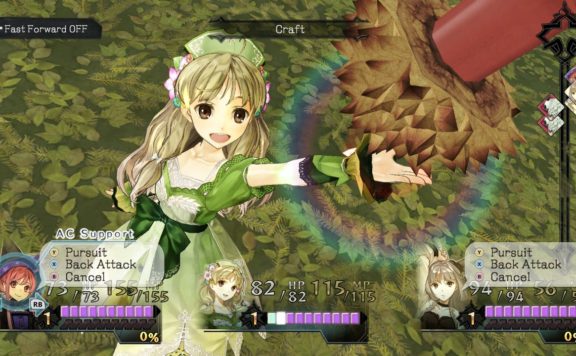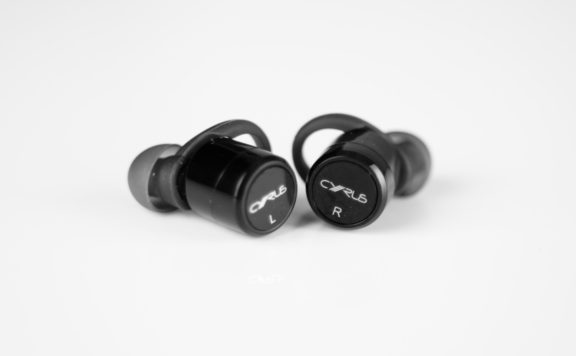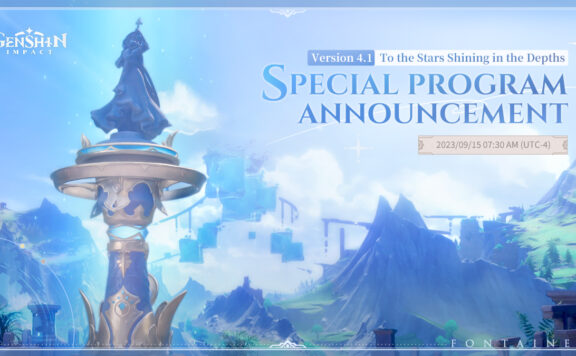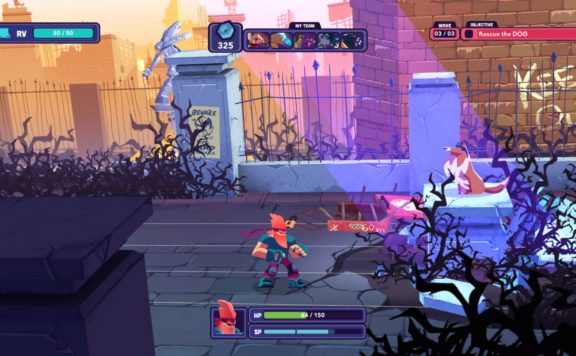While the Nintendo Switch is no stranger to AAA console blockbusters downsizing for a new audience, another mass migration is going on. Azkend 2: The World Beneath is just one of the latest iOS and Android titles making the trade up onto Nintendo’s latest platform. Developed by 10 Tons and originally released in March 2012 it is yet another match three puzzle game attempting to tap into the growing legion of Switch owners.
Opening to the tones of Jonathan Geer, Azkend 2 strikes an exotic tone, marching players right into an unexplored world. Geer’s previous work includes soundtracks for the Sparkle franchise, Puzzle and Pixies, and the incredible Owlboy. Azkend 2’s soundtrack carries Geer’s voice throughout and uses an entire orchestra to fantastic effect, expertly describing the environment far more effectively than the game’s narration is able to.
While Geer’s musical machinations begin, an accompanying series of realist illustrations unfurl, depicting the player’s journey as they begin an ocean voyage. As the dangerous seas open up into a series of exotic landscapes, the game’s narration explains the pretense behind Azkend 2 and begins the match three elements of the game. The inclusion of an expansive story and some very detailed storybook style art is a real step forward from the original Azkend and is an example of just how much thought 10 Tons has put into building a believable world around this match-three title.

Despite the obvious effort put into creating a solid backstory, the real challenge of Azkend 2 is in the puzzles that populate the game. Sandwiched between story skits, match three interludes take place on a game board of hexagonal cells. In order to complete a match-three encounter players must manipulate the items in these cells by selecting a chain of, at least, three matching items. As these items vanish into the ether, new ones filter in, filling vacant slots. This is a fairly standard match-three concept, and challenges players to clear parts of a board towards a specific objective, but even at its most simplistic 10 Tons does make effort to invigorate this idea.
The hexagonal game board allows players to run a continuous line of objects in any direction, allowing at least some freedom and great utility to think your way around problems. Chains can snake across the board and eventually trigger a variety of bonuses that strike out across the screen, swatting useless items from the deck. A chain lightning effect is just one of these bonuses. Some are earned by creating long chains, others are accumulated by meeting specific map objectives against the clock.
The depth of variety in these systems, be it map game types or bonus systems, is impressive. A range of active and passive bonuses are available that, when matched, can remove useless items, release massive explosions, or even allow mismatched pairs. The plethora of bonus systems, both passive and active, are clearly aimed at engaging players and does succeed in keeping things fresh. Similarly, a constantly varied set of matches keep the game from descending into monotony. As the game’s protagonist moves through a lost world, the game’s objectives change. What starts with matching tiles adjacent to a particular target, can turn into an unusual battle against an insectoid AI. As insects scuttle across the board, it is obvious how effective the thematic game modes are in Azkend 2.

While this combination of themed game modes, varied mechanics, and storytelling is a much more satisfying than 10 Ton’s Sparkle Unleashed, it is undermined by some of the console control systems. As an obvious mobile port, Azkend 2’s most problematic element in its transition to Switch is the transition from a primarily touch screen system to include JoyCon controllers. 10 Ton’s title faced similar criticism when this title launched on PSN, and it is still a valid concern today. Match 3 can work fantastically in a mobile environment, giving players a physical connection to the game. The transition to JoyCon controllers, however, introduces an on-screen cursor that must be manhandled across the game board. Using analogue controllers to drag the cursor from one cell to another feels generally slow and unwieldy, removing any physical connection to the game board. Selecting a chain of cells requires an increasingly deft level of finesse as Azkend’s challenges become more complex, and while this is balanced by the inclusion of touchscreen controls, my stumpy fingers rarely managed to find their target on a distinctly busy screen.
However, despite the issues with the controls, Azkend 2 really excels at keeping the player engaged. It uses the narrative to drip feed new mechanics and dreams up new and unorthodox ways to challenge the player. Despite a narrator that lacked any real urgency in the world, the story is still sufficient to drive the player along and, as always, Jonathan Geer’s work is fantastic. If you want a match three game with more depth than some candy soaked competitors then Azkend 2: The World Beneath is $7.99 on Nintendo Switch.
6.5 / 10
Pros
- A complete narrative
- fantastic soundtracks
- varied challenges
Cons
- problematic controls
- narration lacks urgency
- limited reason to replay outside the story







